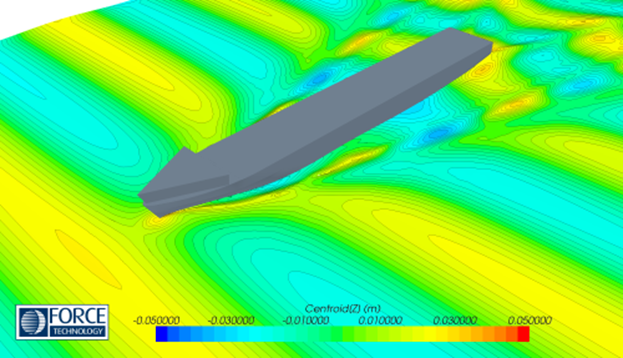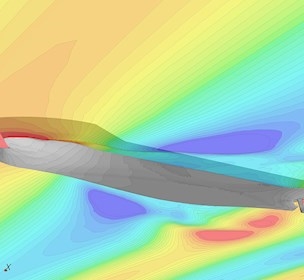Computation of added resistance in waves
Detailed flow field information in the design phase improves ship performance in both calm water and waves.
Information about ship motions and added resistance in waves can be useful for the ship designer when the lines of a new ship are made. Partly because it gives information about the additional resistance due to waves and thereby indications of the additional fuel consumption related to this, and partly because it tells how, for instance, the above-water part of the bow with its flare behaves when diving into the water.
Towing tank and potential flow methods
Traditionally, ship motions and added resistance in waves have been determined based on potential flow methods or towing tank testing. The potential theory-based computations are widely used, and they are relatively cheap to perform, but they do have limitations. Towing tank testing requires a physical scale model which may be too expensive in the design phase where, typically, different design variants are considered. Finally, none of the methods provide detailed flow field information like hull surface pressure and local flow velocities which are useful for design purposes when shaping the hull form.Resistance with CFD
An alternative method is RANS CFD which in theory should be able to generate information about:- the forces and moments, including added resistance in waves
- the features of the flow field
- the motions.
The result
The outcome of the project shows promising results and an accuracy that makes it applicable for evaluation of added resistance and motions for different design variants in the design phase. CFD-based simulations of ships in waves are therefore now offered as a supplement to our calm water CFD services in order to help our customers with a more complete evaluation of their designs which hopefully will lead to a well-performing hull form in calm water and waves.


